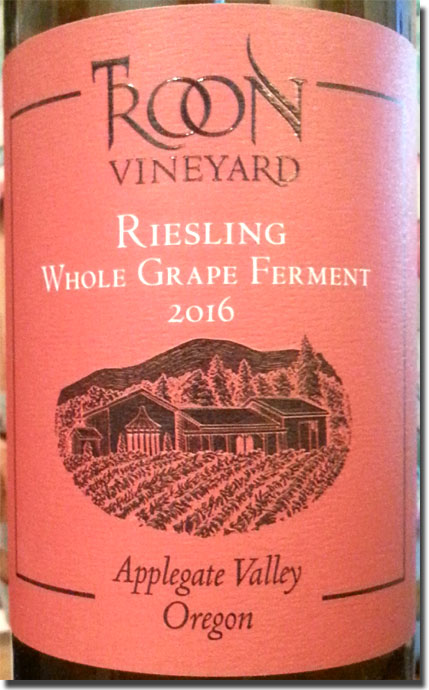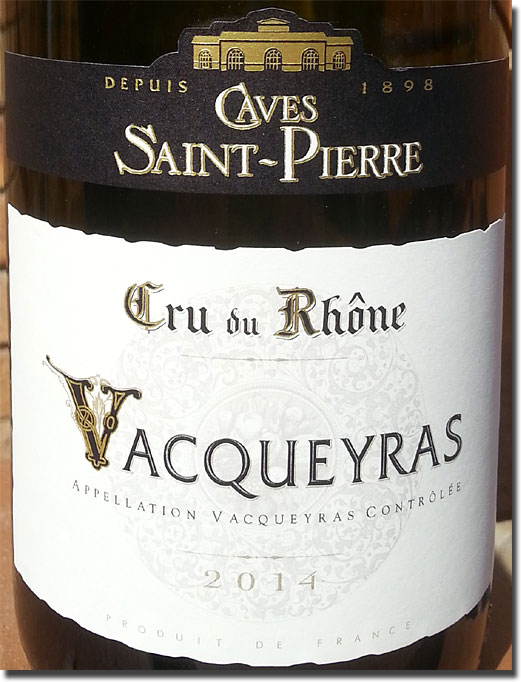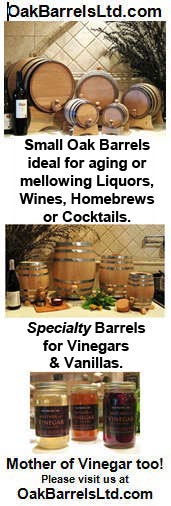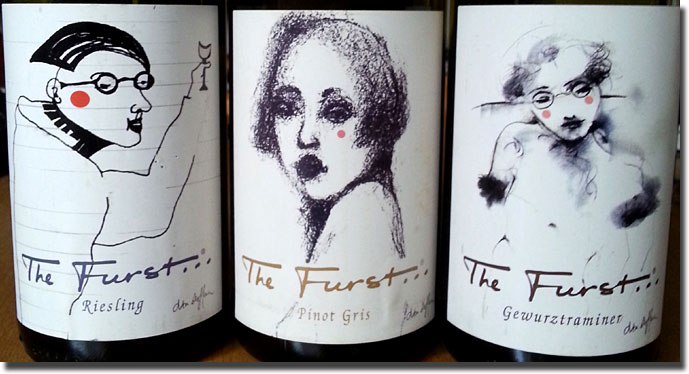Archive for May, 2017
Orange Wine From Oregon’s Troon Vineyard
 While several of our serious “wine geek” friends and acquaintances have been either extolling to virtues, or at least investigating, so-called “orange wines” for the last several years now, our experience with them has been extremely limited. They haven’t flown completely under our radar, but we haven’t exactly gone out of our way to seek them out, either.
While several of our serious “wine geek” friends and acquaintances have been either extolling to virtues, or at least investigating, so-called “orange wines” for the last several years now, our experience with them has been extremely limited. They haven’t flown completely under our radar, but we haven’t exactly gone out of our way to seek them out, either.
For the uninitiated, orange wines are white varieties that are produced in the same manner as red wines. Whereas the vast majority of whites are made by removing skins and other solids early on in the winemaking process, those same skins and solids are left in contact throughout maceration and into the aging process. Troon Vineyard General Manager Craig Camp describes the process used for this particular wine thusly: “Produced essentially the same way as our red wines, this fruit was first crushed by foot, destemmed, then it was transferred to one-ton fermenters. The native yeast fermentation started after fourty-eight hours and completed in ten days. The fermenters were punched down by hand once a day. It was then pressed into neutral French Oak barrels for three months. That’s it.”
To be honest, the few orange wines I’ve tried previously did nothing whatsoever for me, but our impressions of Troon’s offerings have been mostly very favorable, so I was more than a little curious as to how I’d react to sipping this one over a few hours.
2016 Troon Riesling, Whole Grape Ferment, Applegate Valley, 12% alc., SRP $20.00: Yes, this has something of an orange-gold color; it’s not terribly expressive on the nose, but what’s here, while a little hard to describe, is not unpleasant. It shows good intensity on the palate, and is unlike any Riesling I can remember tasting, offering a good dose of mineral, with zippy acids on a medium bodied frame. The closest I can come to describing the fruit here is something like star fruit with hints of orange and cinnamon. Despite its unusual character, this fairly rich, completely dry wine grows on me with each sip, and by the second glass, I find it to be quite pleasant, and very food friendly. Kim disagrees, and doesn’t care for it at all. It’s not for everyone, to be sure, but it’s certainly not one of your “usual suspects,” either. Find this wine
Camp recommends pairing this with tapas, “as it literally can be matched with almost any food as it’s the white grape version of rosé combining a bright fruitiness with some structure.” He also states that Troon will be adding a Vermentino to its “orange wine” program in 2017, so I’ll be interested in seeing (tasting) what that one’s all about.
Reporting from Day-twah,
Bastardo
Furst Time
Remember that 2013 The Furst Pinot Blanc I told you about in early March? Well, I liked it so well, I went back for more, but the shop was out and indicated that they couldn’t get any more.
Boo!
I kept an eye out for more of it during my explorations over the next few weeks, and found the following three instead. I brought them home to see if they are as good as the Pinot Blanc, and I’m pleased to report that they mostly are.
“All of The Furst… wines are made by Cave Vinicole de Kietzenheim-Kaysersberg. The Cave is a small consortium of wine growers located on the foothills of the Vosges mountains. Participating growers generally own small vineyards, averaging 3 to 5 acres in size. Such small holdings would not permit each grower to produce enough wine to be commercially viable and certainly not to have enough quantities to export wines. Therefore, the “Cave Vinicole de Kietzenheim-Kayserberg” was created.
The group limits the number of participating growers as well as Cave employees – there is only one wine maker and an agronomist on staff who make all of the necessary decisions in order to guarantee quality and consistency in production.” ~ Eagle Eye Brands Website
2014 The Furst… Riesling Alsace, 13% alc., $11.99: Clean, medium color, with an expressive nose of slightly herbaceous green apple and mineral; the pungent flavors echo and expand, with wet stone minerality. Medium bodied, with some of that characteristic Alsatian oiliness, brisk acids and good length on the finish. This wine has quickly become my go-to QPR white, period. I’ve already gone through half a case, I like it that much. Find this wine
Another Red Rhône QPR All Star
 2014 Caves Saint-Pierre Vacqueyras, 11-14% alc., $12.99: This is the 4th consecutive vintage of Caves Saint-Pierre Vacqueyras that we’ve brought home from our friendly neighborhood Trader Joe’s, and it might just be the best one yet. Interestingly, like its even-year predecessor, the 2012, it’s a little more fruit forward than the odd-year 2011 and 2013. (The ‘13 is the only one of these that we haven’t reviewed here; it tended to be somewhat hard, and I didn’t find it interesting enough to bring a whole lot of home, much less write about.)
2014 Caves Saint-Pierre Vacqueyras, 11-14% alc., $12.99: This is the 4th consecutive vintage of Caves Saint-Pierre Vacqueyras that we’ve brought home from our friendly neighborhood Trader Joe’s, and it might just be the best one yet. Interestingly, like its even-year predecessor, the 2012, it’s a little more fruit forward than the odd-year 2011 and 2013. (The ‘13 is the only one of these that we haven’t reviewed here; it tended to be somewhat hard, and I didn’t find it interesting enough to bring a whole lot of home, much less write about.)
Full bodied and well-structured, this latest bottling gives plenty of what we’ve become used to from this producer; deep, dark color, lots of earth and iron, hints of leather and a generous dollop of fairly rich black plum, black currant, blackberry and even a little black cherry. A solid match for a variety of grilled red meats and hearty stews, it offers good QPR (quality-price ratio) and a nice alternative to similarly priced Cotes-du-Rhônes. You can lay some bottles down for 3-5 years, but there’s no reason not to uncork a bottle tonight and enjoy with medium-rare lamb burgers. We’ve gone through at least a case of this already, and I’ll keep bringing bottles home as long as its available. Find this wine
Imported by Latitude Wines, Inc., Danville, CA
Reporting from Day-twah,
Bastardo




